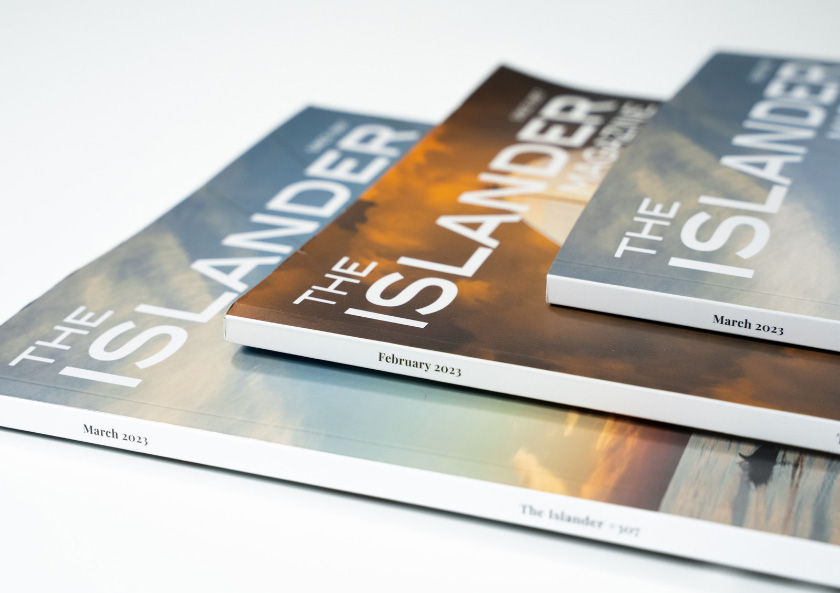
The time has enabled me to consider the sort of content I could present for the magazine that would be useful for yacht crew, who are the main focus of my writing for The Islander. As an RYA Yachtmaster Instructor for both Power and Sail, I want to share my knowledge and experience with you and provide useful tips and tricks on subjects such as boat handling, tides, weather, chartwork and pilotage. The aim of this developing series is to assist those that are working towards the skill levels of Day Skipper and Yachtmaster.
In this example, let’s imagine that we wish to take a vessel from a marina to an anchorage. As with any passage, we must ensure to avoid any hazards en-route and take the shortest, safest possible route from our position, point A, to our destination. It is important to plan the trip, regardless of its duration and/or distance, on an appropriate chart.
We plan to depart our position in the marina, point A. We see from our plan that we can insert a waypoint which we will refer to as point B and then proceed to our destination, point C.
Our intention is to depart from the marina and head to the first waypoint, B. The waypoint is due north of the marina, 000º on the compass. We have chosen a waypoint that will ensure clearance of a number of rocks which will be on our starboard side, to the east.
Upon safe arrival at our waypoint B, we will turn to starboard to aim for the anchorage, due east of our waypoint. On this second leg, we must avoid rocks which will be on our port side, north of us.
The wind is coming from the southwest, which may push us off towards the hazards.
We will use pilotage techniques by utilising landmarks, (which are charted objects such as lighthouses, towers and chimneys that we can clearly see with the naked eye)and use them for head marks and back bearings, to ensure that we keep on our desired track and clear of the dangers. A head mark is a landmark seen forward of our vessel and a back bearing is seen astern. In both cases the landmark lines up with the course we intend to follow.
In real life, and for this example, I will draw a sketch of my plan to have in my pocket whilst I’m on deck. I will allocate a helmsman to steer and, using a hand-bearing compass, I will check the bearings of my landmarks in relation to the position of my vessel.
On the first leg (A to B), we are using a head mark, which is due north of A and B, meaning all 3 points line up. Therefore, if I am on my planned course the head mark will read 000º on the compass. If while en-route it was to read for example 010º, we are to port (west) of our course, and if it was to read 350º, we are to starboard (east) and in danger of colliding with the rocks.
Upon arrival at waypoint B (which we would need to verify using additional methods) our second landmark will be on our port side, at a bearing of 270º (west). We will then turn to starboard to a course of 090º (east), towards our anchorage, using the landmark as a back bearing, astern of us at a bearing of 270º. If the back bearing reads 280º (higher), we are to starboard (south) of our course. If the bearing reads 260º (lower), we are to port (north) of our course, and therefore in danger of colliding with the rocks.
When using this method, it is important to be clear what action you must take when your compass shows you are off the chosen bearing.To get back on track, do you turn to port or starboard? You’ll see from my sketch that I have drawn three boats on each of the legs, one which is on course, one to starboard of the course and one to port. I have made a note of the bearings and have drawn arrows showing me which way to steer to correct it. This will prevent me taking the wrong action by mistake.
An easy rule of thumb is that with a back bearing, “left is less”. Meaning if you want to reduce the bearing, turn the vessel to port. Therefore turning to starboard will increase the number.
With a head mark, it’s the opposite. Therefore, I say “if it’s on the left, it’s getting less”, meaning if you turn to starboard, the landmark will be seen over your port bow and the bearing will decrease. This means, if you want the number to increase, you must steer to port.
I hope that reading this has been informative.
Nathan Skinner
Nathan@WhyKnotSailing
Facebook.com/NathanSailing














0 Comments